We know of three interstellar objects (ISO) that have visited our inner Solar System. Oumuamua was the first one, and it came and went in 2017.
2l/Borisov, an interstellar comet, was next, appearing in 2019. And right now, the interstellar comet 3I/Atlas is enjoying a visit to the Sun-warmed inner Solar System.
A massive number of ISOs must have passed through our Solar System during its long, 4.6 billion-year history. It's possible that some of them slammed into Earth.
Related: Why Interstellar Comet 3I/ATLAS Looks So Weird – And Why It's Not Aliens
Maybe ISOs are responsible for some of the ancient impact craters whose remnants we can still see today, like the Vredefort impact structure.

Our Solar System is much more placid than it used to be. Early in its history, it was molded by chaotic collisions. There are fewer rocks and fewer collisions now because much of the rock accreted into the terrestrial planets.
But the same can't be said about ISOs. There's no reason to believe there are fewer ISOs entering our Solar System than there were in the past.
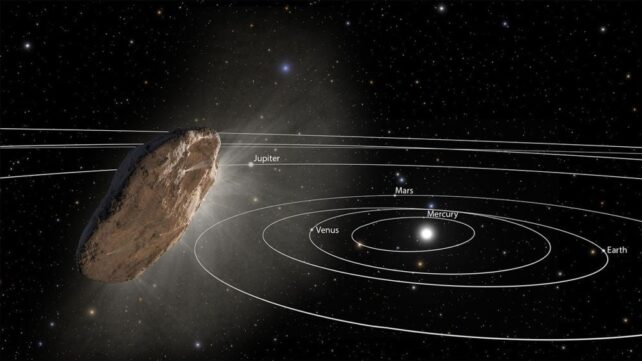
That means they pose an impact risk to Earth. Is there any way to quantify that risk?
New research titled "The Distribution of Earth-Impacting Interstellar Objects" tries to understand the risk. The lead author is Darryl Seligman, an assistant professor in the Physics and Astronomy Department at Michigan State University. The paper is available online at arxiv.org.
"In this paper we calculate the expected orbital elements, radiants, and velocities of Earth-impacting interstellar objects," the authors write.
Their work doesn't calculate the number of ISOs because there are no constraints on the number to work with. Their work only concerns their expected distribution.
When it comes to the source of ISOs, they focus on what are called M-star kinematics. M-stars, also known as red dwarfs, are the most numerous type of star in the Milky Way. It stands to reason that most ISOs would be ejected from M-dwarf solar systems purely based on numbers.
However, the authors admit this is somewhat arbitrary.
"This choice is admittedly somewhat arbitrary because the kinematics of interstellar objects is unconstrained," they explain.
The researchers used simulations to try to understand the problem.
"We generate a synthetic population of ~1010 interstellar objects with M-star kinematics in order to obtain ~104 Earth-impactors," the researchers write.
Their simulations show that ISOs are twice as likely to come from two directions: the solar apex and the galactic plane.
The solar apex is the direction the Sun follows relative to its solar neighborhood. Basically, it's the Sun's path through the Milky Way. ISOs are more likely to come from the solar apex because the Solar System is moving in that direction. It's like driving in a car and hitting more raindrops.
The galactic plane is the flat, disk-shaped region that the Milky Way occupies. Since it's where most of the other stars are, ISOs are likely to come from this region. ISOs approaching from ahead have a higher collisional cross-section.
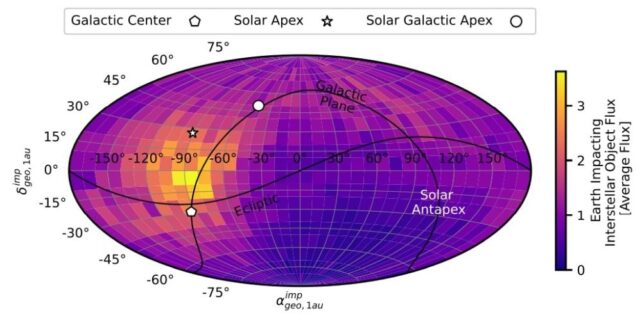
The simulations also show that ISOs from the solar apex and the galactic plane would have higher velocities. But counterintuitively, the ones that could impact Earth have slower velocities.
This is because the subset of ISOs that can impact Earth has a tendency to be low-eccentricity hyperbolic bodies. The Sun's gravity has a greater effect on these objects and can preferentially capture slower-moving objects and shift them into Earth-crossing trajectories.
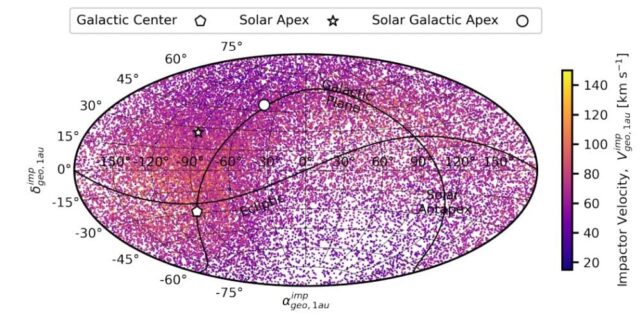
The seasons make a difference, too. ISOs with the highest impact velocity are more likely to arrive in the Spring, because Earth is moving toward the solar apex. But winter has more frequent potential impactors because at that time Earth is positioned toward the solar antapex, the place the Sun is moving away from.
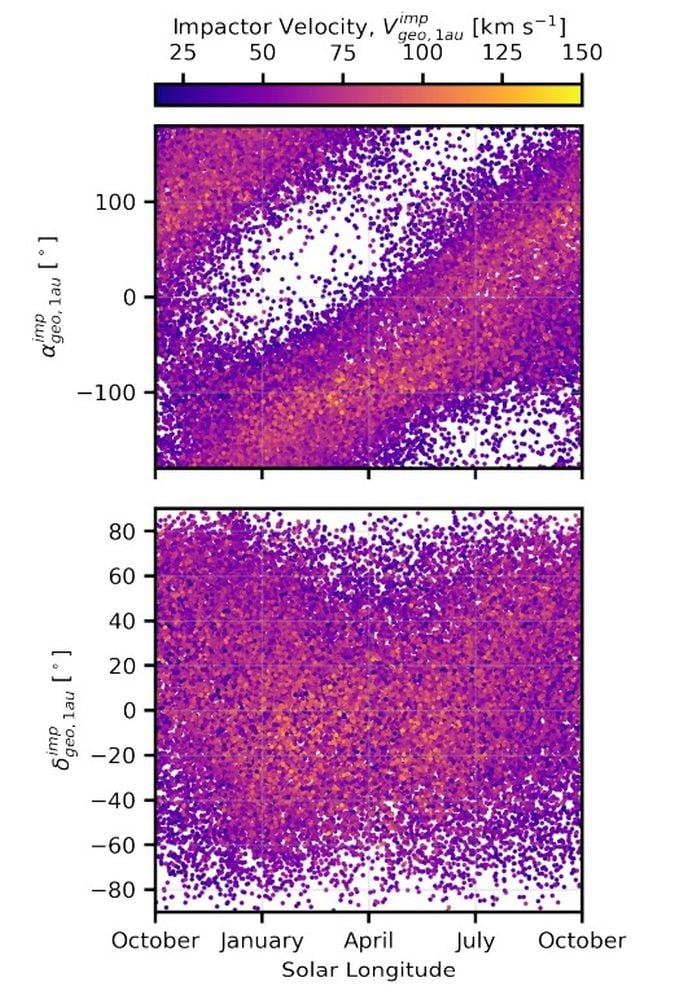
When it comes to what part of Earth is most at risk of an ISO impactor, low latitudes near the equator face the greatest risk. There's also a slightly elevated risk of impact in the Northern Hemisphere, where almost 90 percent of the human population lives.
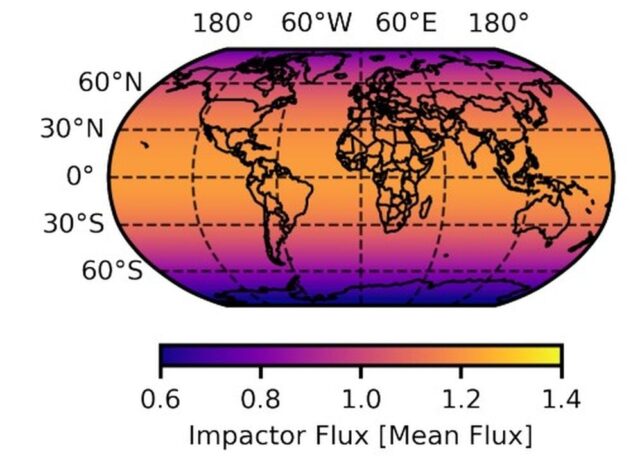
As explained earlier, this work is only for ISOs ejected from M-dwarf systems.
"These distributions are only applicable for interstellar objects that have M-stars kinematics. Different assumed kinematics should change the distributions presented in this paper," the authors explain. But they also point out that the main points in their work likely apply to other kinematics."
"The salient features summarized in this section presumably also apply to different kinematics, perhaps to a muted or more distinct overall effect," the researchers write.
It bears repeating that this work doesn't predict the number of ISOs. There's no way to measure that.
"In this paper we intentionally do not make any definitive predictions about the rates of interstellar impactors," the authors write in their conclusion.
But the results do feed into future observations with the Vera Rubin Observatory and its Legacy Survey of Space and Time. It gives astronomers an idea about the distribution of ISOs that should be detected by the VRO.
We're just opening our eyes to the idea of ISOs.
This paper gives us an idea of where Earth-impacting ISOs are likely to arrive from, when they're most likely to impact, and where they're most likely to impact. Once the VRO and its LSST get going, astronomers will begin to acquire data that will either support or undermine these findings.
This article was originally published by Universe Today. Read the original article.

